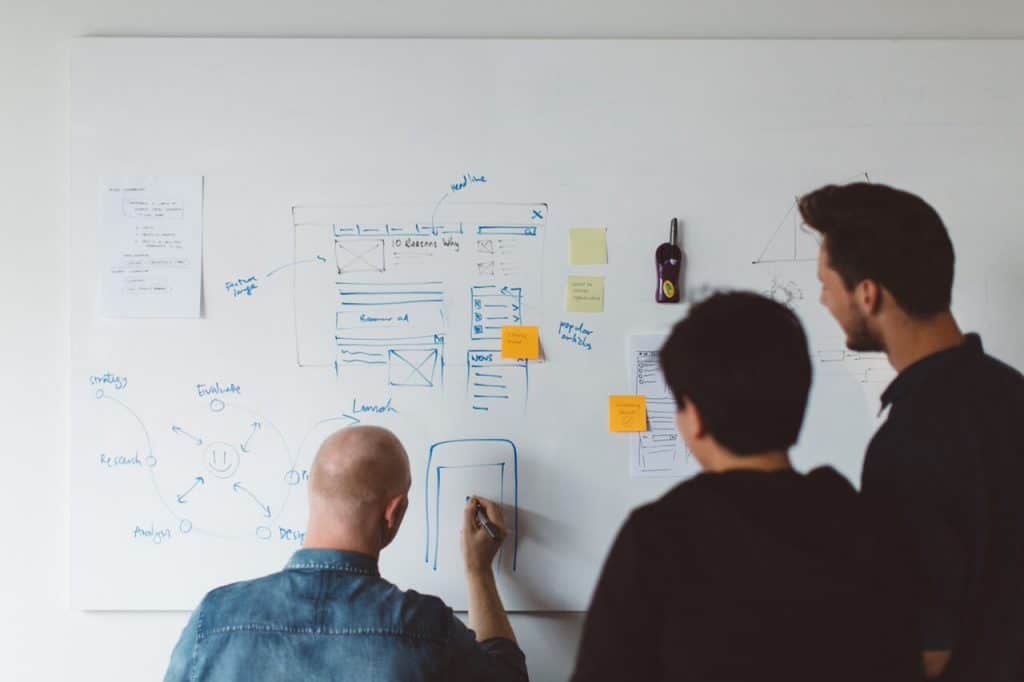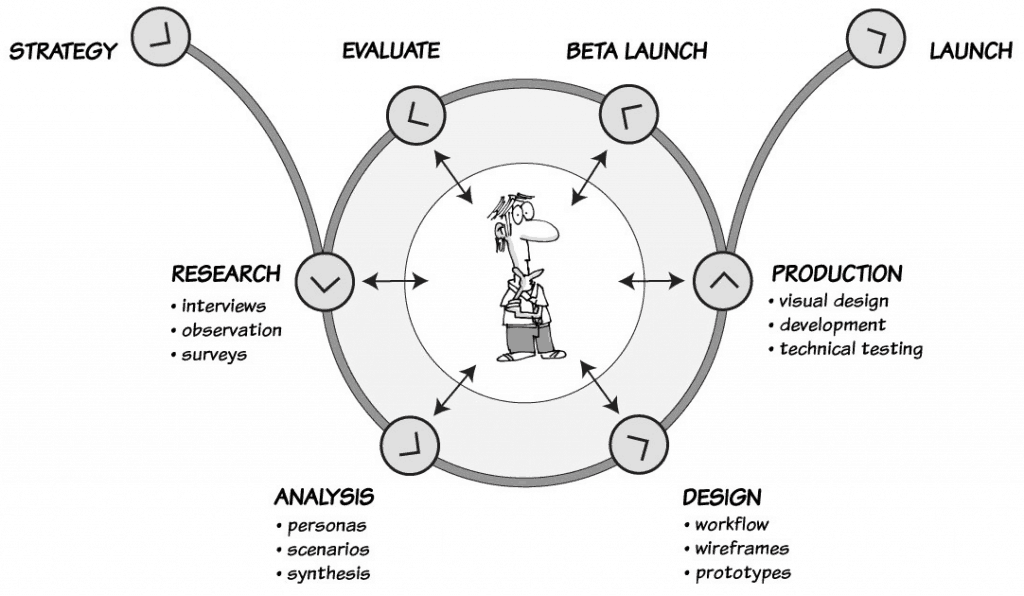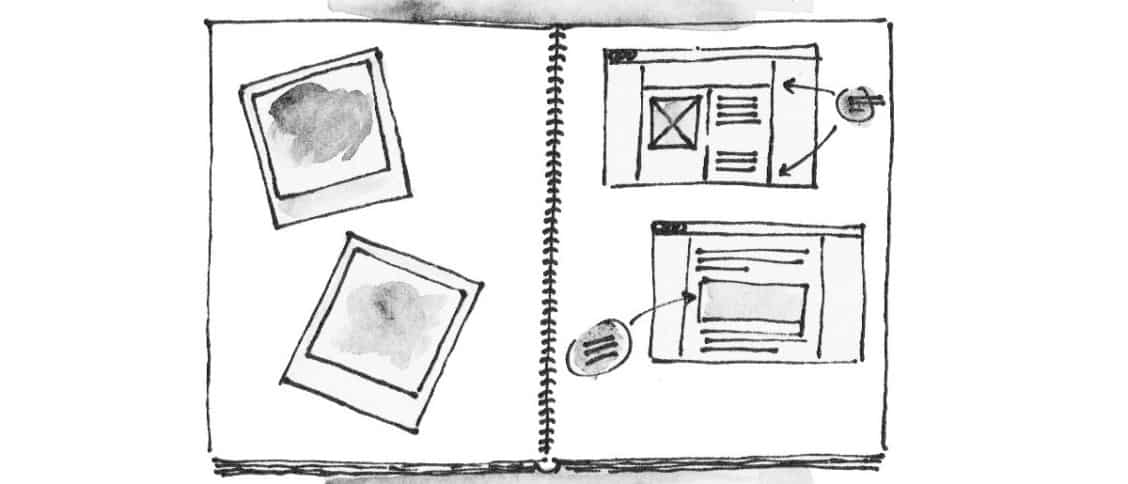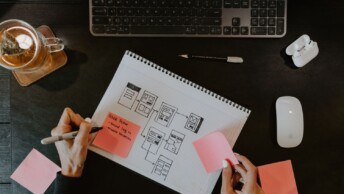We want to help you get the tools and advice you need to get started in UX, or take your career to the next level. Look out for more posts on this topic, and don’t forget to join the conversation in the forums!
Job interviews are nerve-wracking at the best of times. Whether you’re just starting out in UX or need a little inspiration, here are five ways you can prepare to nail your next interview.
1. Your portfolio is everything (well, almost!)
Portfolios are the standard for showing work for designers. But the trouble with creating a UX design portfolio is that so much of what we do isn’t strictly visual. This makes it hard to showcase your work in a portfolio in the same way as a graphic designer or UI designer.
Because many UX designers come from a UI or graphic design background, many employers still expect to see a portfolio of your work. They often expect UX designers to have traditional design skills.
This attitude is starting to change, but even so, you need to a way to show your previous work. You just might need to get a bit creative. Here’s how:
Write about what you do
Blogging about UX design shows your knowledge of the field in a creative way that potential employers can easily understand. It demonstrates your passion for the field and helps you learn (and teach) difficult or new concepts. Try guest blogging for other UX design sites to boost your SEO and make your blog easier to find.
Create a website
A website is essential for employers to find you, and a platform to talk about the work you’ve done for previous clients. If your work wasn’t visual, present it in an engaging way using images, logos and photographs.
Wireframes
Wireframing is a visual element of UX design work, even if it’s not the prettiest or most polished part of what you do. Upload project wireframes to your website under client projects. This way you can show your interviewer the ‘back end’ of design – the thought that goes into the navigation, information architecture and user flow for each site.
2. Know what UX design means to you
It’s common to be asked about you define UX design in an interview, as it gives a clear insight into how you work, and how you’ll fit in with the rest of the team. If you’re a junior, you need to be able to work effectively with the company’s senior UX designer. For senior roles, your approach to the field shapes the company’s approach.
Where do you sit on the UX/UI debate?
A commonly used definition of UX design is:
“The process of enhancing user satisfaction by improving the usability, accessibility, and pleasure provided in the interaction between the user and the product.”
Compare that against a common definition of UI design:
“UI design is focused on the design of the actual interface elements that the user interacts with to accomplish a goal within an application.”
It’s useful to understand both, and where you sit on the continuum, as it helps to place you within the existing skills of the team. If there’s no UI designer, for example, you might be expected to work in this area too.
3. You are not an island

Teamwork and communication are core skills of a good UX designer – we work with lots of different types of people in this job. Interviewers need to see that you can explain complex concepts simply and clearly, and that you’re a team player.
If you’re the sole UX designer at a startup it’s likely you’ll be working with everybody – from the copywriter to the CEO herself. You’ll be responsible for seeing projects through from end to end, with the help of user groups, of course. If you’re lucky enough to be part of a large UX team, you’ll probably work with user researchers, UI designers, graphic designers and content strategists.
Whether flying solo or in a team of UXers, you’ll always have an ongoing dialogue with the web development team. They’ll work with you to scope out your ideas, plan your timelines and ultimately implement your designs.
4. Describe your unique process

Because there’s so much ambiguity surrounding UX design, it’s a good idea to talk your interviewer through how you work.
Try speaking on their terms, and explain (based on your research of the company) what you’d do if you worked there. This helps your prospective employer visualise you working there, which is handy trick that can help you land the job.
If you’re new to the field, a standard process can guide you until you’ve figured out exactly how you like to work.
The general UX design process involves:
- User research: Collating information from your target persona via interviews, user groups, surveys and questionnaires to understand the needs and behaviour of the user.
- Design: Structuring, labelling and organising content on the site (information architecture), wireframing, prototyping.
- Testing: Usability testing (observations, questionnaires, surveys), A/B testing, remote user testing.
- Implementation: Working with web developers and UI designers to get your design built and functioning.
5. Engage with your field online
Show your interviewer that you’re passionate about what you do. They want to see that you’re in it for more than paying the rent. In addition to blogging, make sure to mention blogs you read, influential people you follow and sites you admire for their UX design.
Need some inspiration? Here are a few of my favourites:
Blogs
Sites with great UX:
Influencers on Twitter
- Abby Covert @Abby_the_IA
- Jared M Spool @jmspool
- Whitney Hess @whitneyhess
- Karen McGrane @karenmcgrane
- Peter Merholz @peterme
- Liz Danzico @bobulate
- Doug Collins @DougCollinsUX





